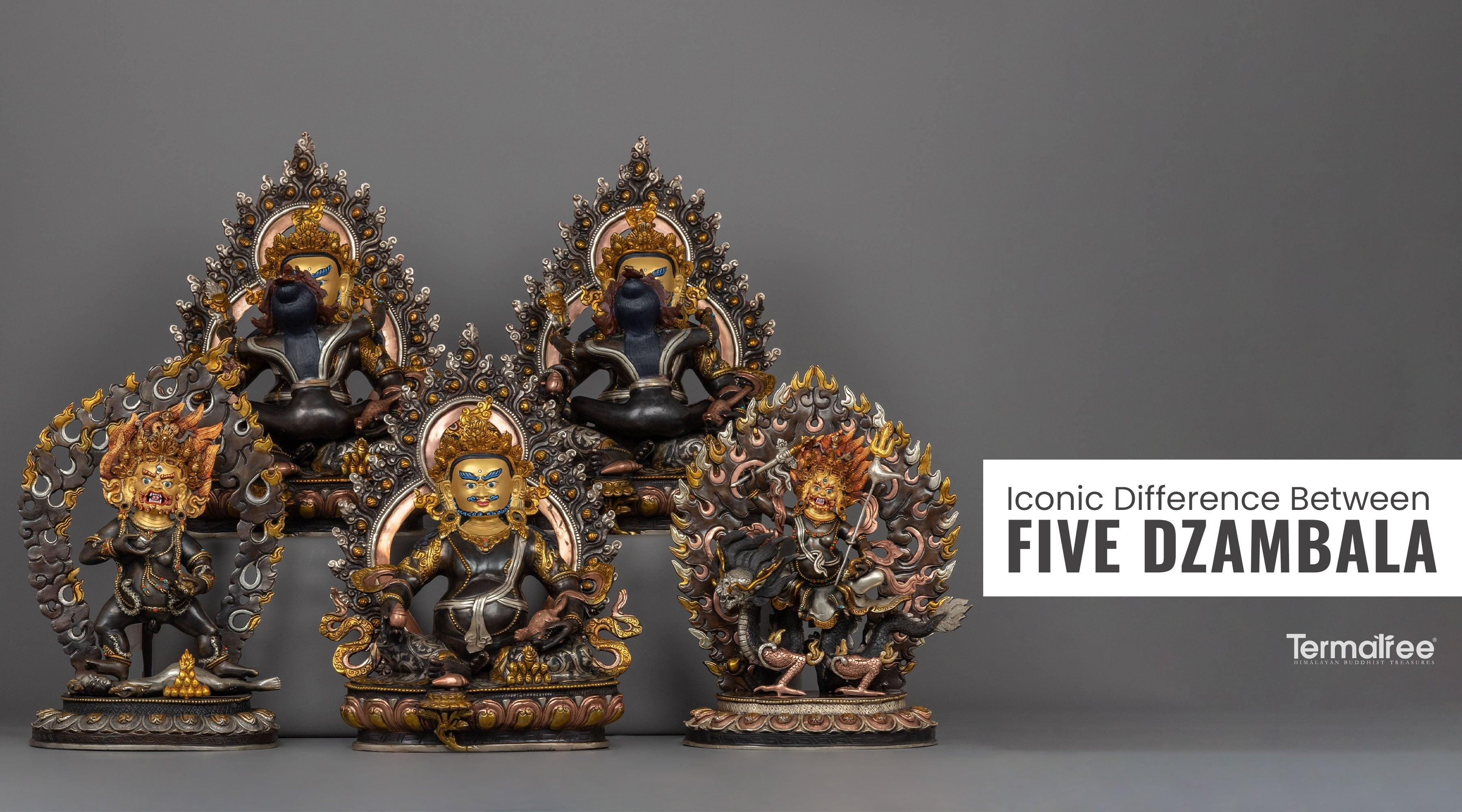Who is the Wealth Deity Dzambhala
The Wealth deity in Buddhist mythology and the protector of the north is Dzambhala or Jambhala, a member of the Jewel family. In Hindu mythology, Dzambala is known as Kuber. He is also believed to be an emanation of Avalokiteshwor (Chenrezig), or the Buddha of Compassion, manifesting as the wealth-giving Buddha.
Five distinct wealth Jambalas exist. Every Jambala has its own chant and ritual that it uses to combat poverty and establish financial security.
Dzam means "assembly" or "deity." "Gold or wealth," Bhah, which means "to honor," is the sense of the word "la." Dzambhala means "precious golden deity who gathers or distributes spirituality or Dharma with material stability or accomplishment to our circumstances."
The Buddhist wealth deity Jambhala has several manifestations; there are at least twelve of them in the Sarma traditions alone, without counting the numerous figures from the "Revealed Treasure" tradition found in the Nyingma school of Tibetan Buddhism.
The depiction of the Five Dzambhala
-
Yellow Dzambhala

"Om Jambhala Jalendraye Svaha"
The most well-known and potent of the Wealth Gods is thought to be the Yellow Dzambhala. He is the Buddha Ratnasambhava's emanation. Within the six domains, he can end poverty while boosting virtues, longevity, and wisdom.
He is usually depicted seated upon a moon disc lotus with a semi-wrathful expression decorated with gold. Yellow Jambhala is seen with silk clothing, a crown, and exquisite gold and jewelry. With a mongoose in his left hand and a Bijapuraka (citron) fruit in his right, he is seated regally on a throne. The mongoose, which stands for Jambhala's triumph over the Nagas, is continually spitting forth priceless gems and wealth.
The Yellow Jambhala symbolizes prosperity gained by moral means, encouraging selflessness and giving. By invoking Yellow Jambhala's blessings, one develops an abundant attitude and spreads benefits to others.
Click here to view our Dzambhala statue collection
2. Black Dzambhala:

"Om Jambhala Jalendraye Bashu Dharini Svaha"
The Hindu deity of prosperity, Kubera, is thought to have started in India as the black Jambhala. The Black Jambhala represents the eradication of human greed and ego.
In the statue his body is painted black hue. He is seen standing over a human body as a metaphor for taming human egos and eradicating human greed. His left-hand clutches a mongoose named Nehulay that shoots precious jewels out of its mouth, while his right hand is holding a gem pot.
In addition, the deity has a snake necklace around his neck. As such, Black Dzambhala tries to relieve the urges that are created by extreme poverty.
The Black Dzambala is highly regarded for his capacity to remove hindrances and vanquish negativity, paving the way for material prosperity and spiritual development. His followers come to him for help overcoming money-related obstacles and achieving stability.
3. Red Dzambhala:

"Om Jambhala Jalendraye Dhanam Medehi Hrih Dakini Jambhala Sambhara Svaha"
The red Dzambhala is commonly depicted with his consort (the heavenly mother of wealth that is in charge of wealth in the human realm) seated upon his lap as he meditates.
In ancient times, royalty and rulers were the principal practitioners of this deity in ancient times. His practice is believe to draw in people, money, and renown, making it best suited for those in high positions or those who wish to pray for high positions. One will have plenty of riches, get the respect of others, and receive their support.
Red Zambhala inspires practitioners to use riches for the good of all creatures by embodying the transformational potential of money. The deity reminds followers of the connection between material prosperity and spiritual well-being, encouraging altruism and generous deeds.
4. White Dzambhala:

"Om Padma Krodha Arya Jambhala Hridaya Hum Phat"
White Jambhala, also known as Dzambhala Gapee in Tibetan, is the compassionate incarnation of the Bodhisattva Chenrezig (Guan Yin). He is able to eradicate poverty and illness-related suffering, cleanse negative karma and karmic hindrances, prevent disease and calamity, and advance Bodhicitta thinking.
White Jambhala, is believed to have emerged from the right eye of Chenrezig. He is seen seated on a snow lion and sometimes on a dragon. His left hand is holding a mongoose that spits forth priceless jewels and accessories. In addition, he weilds a gold sword in his right hand and a Wealth Banner in his left.
White Dzambhala embodies knowledge and purity; it bestows tangible and nourishing prosperity to the spirit. Devotion to this wealth deity allows practitioners to acquire mental clarity and wisdom in wise financial management.
5. Green Dzambhala:

"Om Karma Jambhala Ah Svaha"
The Green Jambhala, the one of the most well-known of the five Jambhalas who is seen holding a mongoose in his left hand and a norbu in his right. In the majority of representations, he is seen holding his partner's hand and a jewel-spitting mongoose on his left.
He lies in the Vajra posture, with consort in front of him. His right foot is atop a conch shell and lotus bloom, and his left leg is curled. His consort has a lotus bloom in her palm.
Lastly devotees of green Jambala, linked to growth and fertility, are bestowed with blossoming plenty and wealth in every area of life. Through communication with the deity, people create an environment conducive to growth and success.
The 5 Dzambhalas are highly significant in Tibetan Buddhism as they represent wealth, profusion, and generosity. Every Dzambhala paves the way toward material and spiritual enrichment by symbolizing a different facet of prosperity and success.
Combined, the five Dzambhalas provide a thorough method for manifesting prosperity and leading their followers toward a happy, healthy life of giving abundance and spiritual fulfillment.
They represent the core of wealth manifestation in the Tibetan Buddhist tradition, providing practitioners with a clear path to both material success and spiritual enlightenment. With their own qualities and meanings, each deity adds to a comprehensive strategy for prosperity and well-being.




